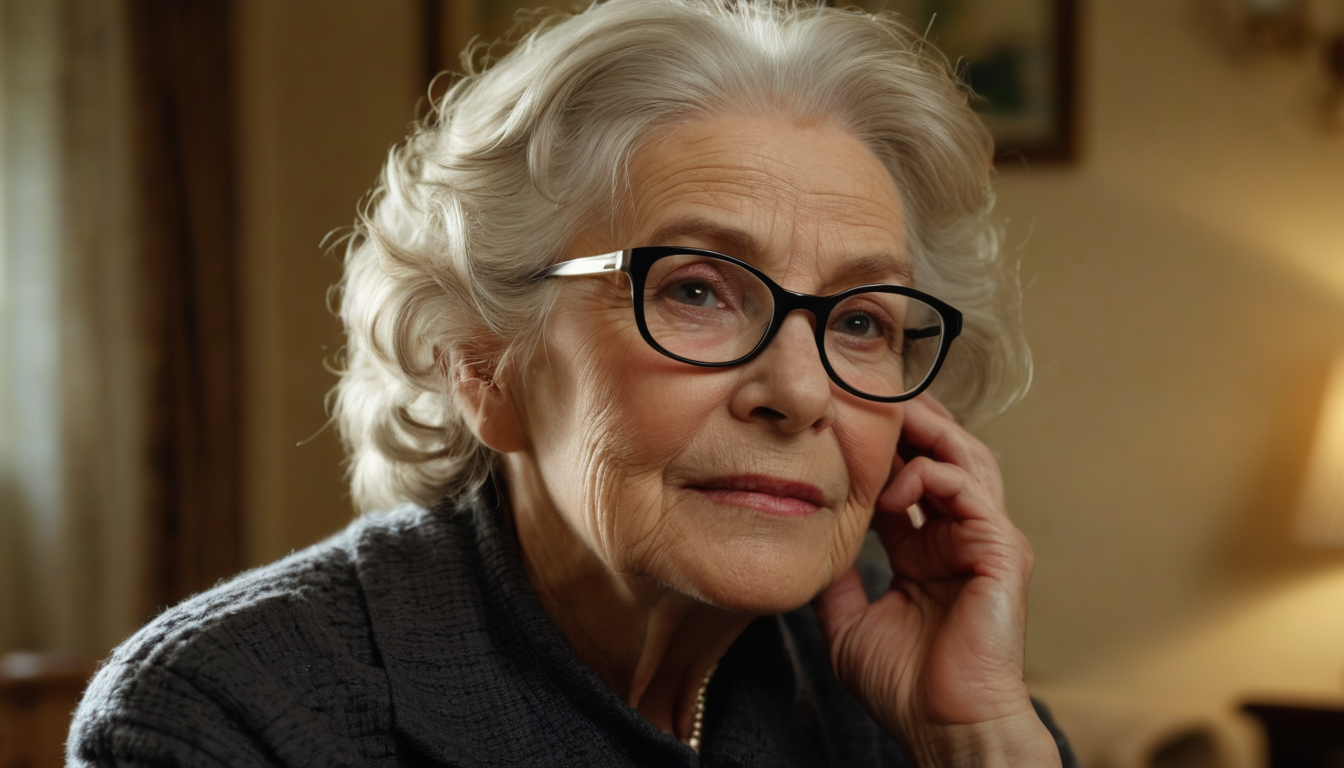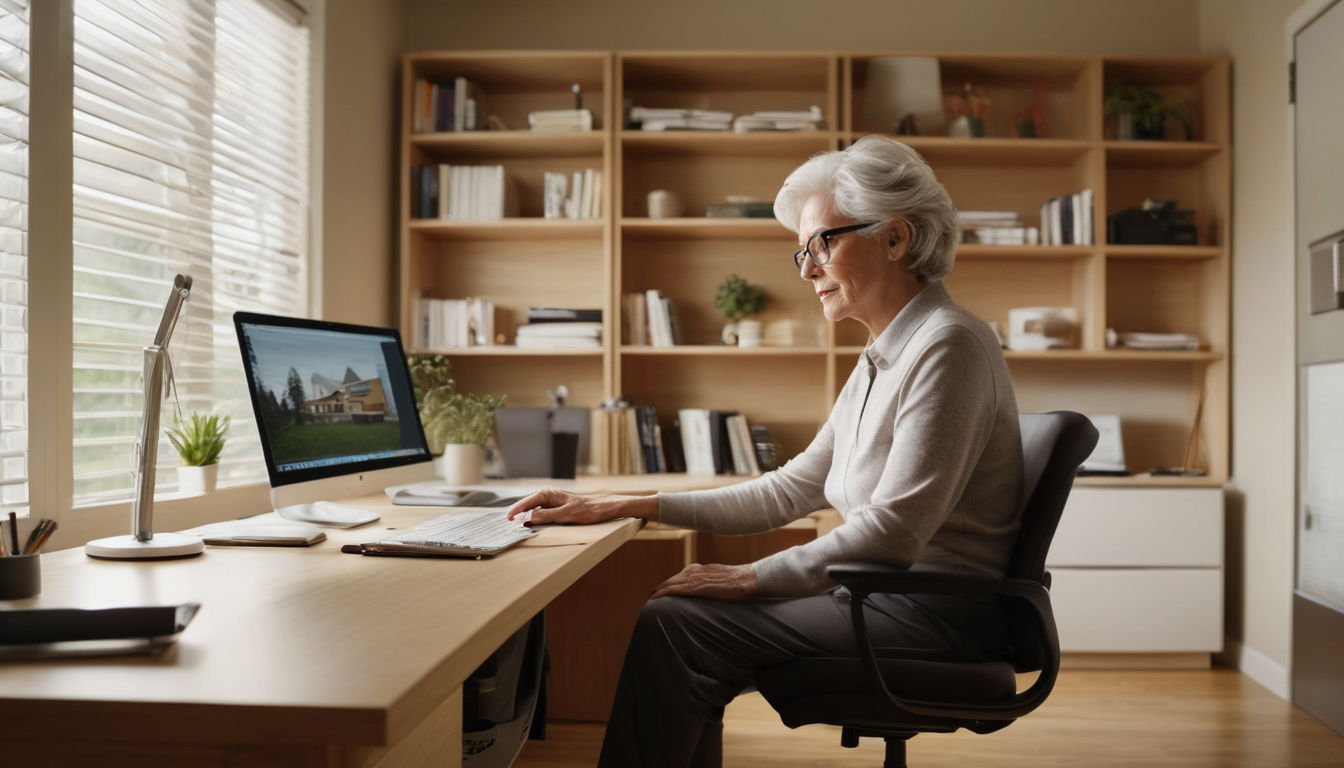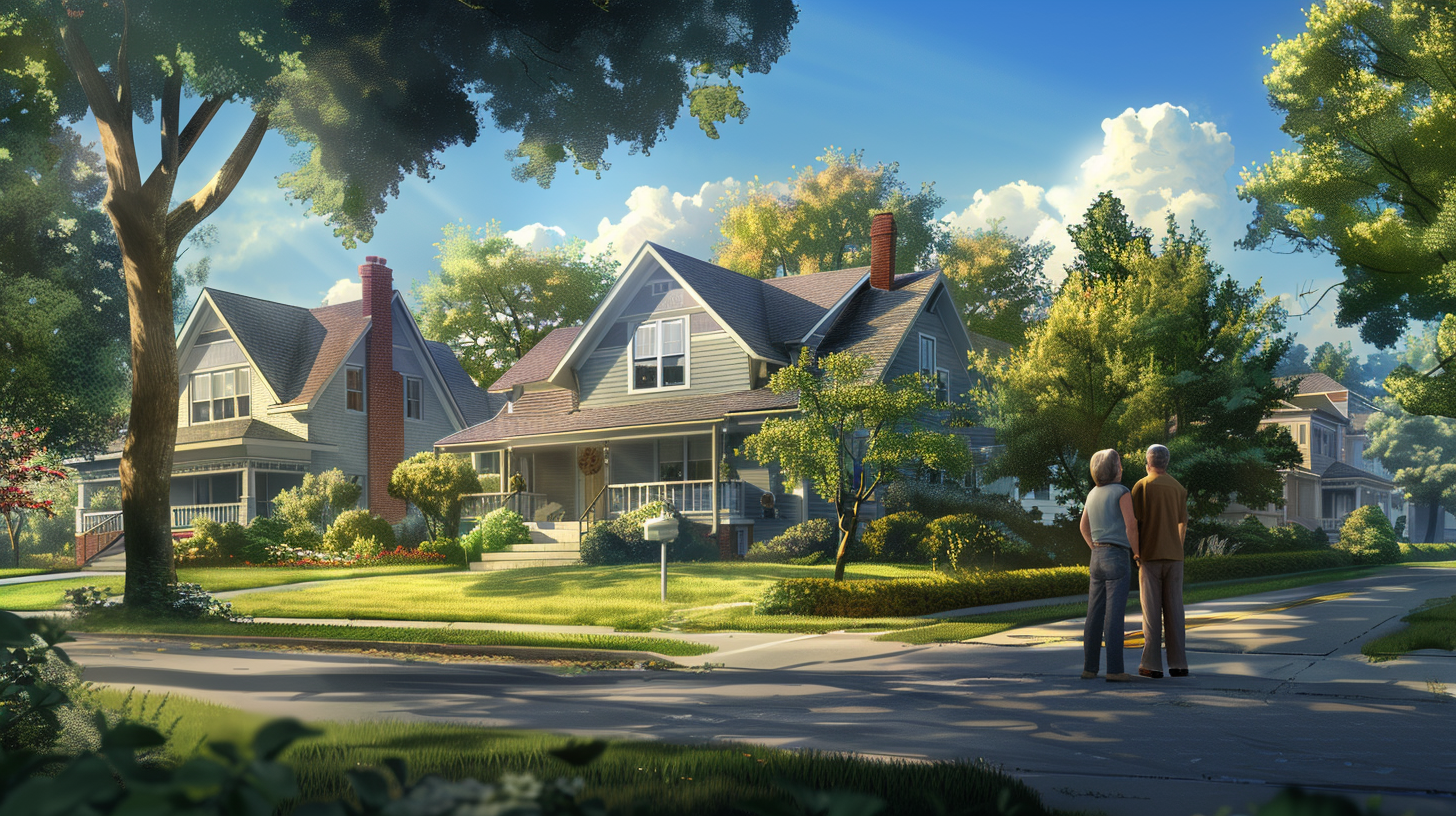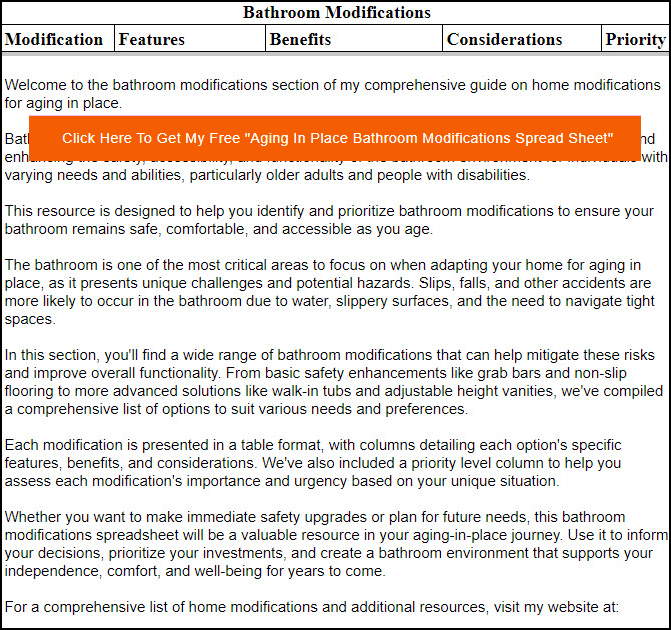Aging in Place Home Modifications: Enhancing Safety, Comfort, and Independence for Seniors
As we age, our homes should evolve with us, providing a safe, comfortable, and accessible environment that allows us to maintain our independence and quality of life.
Aging in place home modifications are essential for those who wish to remain in their homes for as long as possible. These strategic changes and adaptations can transform a house into a supportive and secure living space that meets the unique needs of older adults.
Aging in Place Home Modifications Table of Content Links
Introduction and Why This Article Matters (Listen Now!)
Click the play button below to learn more:
The Importance of Accessibility Upgrades
Aging in place, or the ability to live independently in one’s own home, is a priority for many older adults. According to a survey by AARP, nearly 90% of older adults prefer to age in their current homes rather than move to a senior living facility. However, as we age, our homes may present challenges and safety hazards that can make daily activities difficult or even dangerous.
Falls are a leading cause of injury among older adults, and many of these accidents occur within the home. The Centers for Disease Control and Prevention (CDC) reports that one in four Americans aged 65 and older falls yearly, often due to hazards such as loose rugs, uneven flooring, or lack of proper lighting. These falls can result in serious injuries, such as hip fractures, head traumas, or even death.
You can proactively address these concerns by implementing upgrades and creating a living environment that supports their changing needs. These modifications enhance safety, prevent accidents, and promote independence, comfort, and well-being. When a home is tailored to meet the specific requirements of an older adult, it can significantly improve their daily lives and allow them to age with dignity and grace.
Common Upgrades for Senior-Friendly Living
Several common accessible living modifications can help create a safer, more comfortable, and more accessible living environment for older adults. The following table summarizes the key modifications by area:
| Area | Modifications |
|---|---|
| Bathroom |
|
| Kitchen |
|
| Flooring and Lighting |
|
| Mobility and Accessibility |
|
Bathroom Upgrades
The bathroom is one of the most critical areas to focus on for senior-friendly home improvements. Some essential bathroom upgrades include:
- Installing grab bars near the toilet, shower, and bathtub to provide support and stability
- Replacing a traditional bathtub with a walk-in shower or tub to reduce the risk of slips and falls
- Adding non-slip flooring and a hand-held showerhead for improved safety and convenience
- Elevating the toilet seat to make it easier to sit down and stand up
In addition to these modifications, consider improving the lighting in the bathroom and ensuring that all fixtures are easily accessible and operable.
Kitchen Adaptations
The kitchen is another area where home enhancements can significantly impact daily life. Some key kitchen adaptations include:
- Lowering countertops and cabinets to provide better reach and accessibility
- Installing pull-out shelves and lazy Susans to make it easier to access items in deep cabinets
- Adding task lighting over work areas to improve visibility and reduce the risk of accidents
- Replacing knobs with lever-style handles for easier grip and operation
When modifying the kitchen, specific needs and preferences, such as the height of countertops and the placement of frequently used items, must be considered.
Flooring and Lighting Improvements
Proper flooring and lighting are crucial for creating a safe and accessible home environment. Some important considerations include:
- Removing tripping hazards like throw rugs, extension cords, and clutter
- Installing non-slip flooring materials, such as textured tile, vinyl, or low-pile carpeting
- Improving lighting throughout the home, particularly in stairways, hallways, and other high-traffic areas
- Adding motion-sensor lights or night lights to provide illumination during nighttime trips to the bathroom or kitchen
By addressing flooring and lighting issues, you can reduce the risk of falls and improve overall mobility and independence within the home.
Mobility and Accessibility Enhancements
As older adults age, they may experience mobility challenges that require additional support and accessibility features in the home. Some key mobility and accessibility enhancements include:
- Widening doorways to accommodate wheelchairs, walkers, or other mobility aids
- Installing ramps or stairlifts to facilitate movement between floors or to navigate exterior steps
- Adding handrails along hallways and staircases for improved stability and support
- Rearranging furniture to create clear pathways and reduce obstacles
These modifications can help maintain independence and the ability to navigate their homes safely and comfortably.
The Reality of Falls: A Cautionary Tale
Falls are the leading cause of injury among older adults, often resulting in severe consequences that can dramatically impact their quality of life.
While fictional, the following story illustrates the all-too-common reality faced by many elderly people who have not yet implemented essential safety modifications in their homes.
As you read, consider taking proactive steps to create a safe living environment for yourself or your loved ones.
Click to start or pause the story.
Barbara hummed along to her favorite oldies station, the steam from the shower warming her creaky bones.
Stepping out onto the bath mat, she reached for the towel rack – a flimsy thing she'd always meant to replace.
But today, "meant to" wasn't enough.
Her foot caught on a stray corner of the bath mat, sending a jolt of panic through her.
Instinctively, she reached out to grab something, anything, to break the fall.
Her hand grasped the towel rack, but instead of a sturdy support, it yanked right out of the wall, leaving her plummeting to the cold tile floor.
The sharp sting of pain in her hip stole her breath away.
Fear clawed at her throat as she lay there, the happy melody now a distant echo.
What if this could have been prevented?
Fortunately, a neighbor heard the commotion and rushed in to help Barbara.
But it's a scenario that plays out far too often for seniors living alone.
Simple bathroom modifications, like installing grab bars near the shower and tub, can dramatically reduce the risk of falls – the leading cause of injury for older adults at home.
Don't wait for an accident to happen.
Take action today and explore the many affordable and easy-to-install grab bar options available.
Invest in your safety and peace of mind – and keep those golden years truly golden.
In addition to these modifications, consider improving the lighting in the bathroom and ensuring that all fixtures are easily accessible and operable.
While Barbara's story is fictional, it reflects the all-too-common reality faced by seniors and individuals of all ages who experience falls and accidents due to a lack of proper home safety modifications.
Innovative Home Upgrades to Consider for Comfortable Senior Living

There are also less known ways to modify a home to accommodate the needs of aging residents. Some innovative modifications include:
Movable or Adjustable Cabinetry
Installing cabinets and shelving units easily adjusted in height or position can greatly improve accessibility with limited mobility or reach. This modification is particularly useful in the kitchen, where seniors can benefit from frequently used items within easy reach without excessive bending or stretching.
Contrasting Color Schemes
While not a structural modification, incorporating contrasting color schemes in the home can greatly enhance visual clarity and safety for people with impaired vision. By using contrasting colors for walls, floors, and furniture, seniors can more easily navigate their living spaces and avoid potential hazards, such as tripping over low-contrast obstacles.
Slip-resistant Flooring with Underfloor Heating
In addition to installing non-slip flooring materials, incorporating underfloor heating can provide added comfort and safety benefits. Underfloor heating can help reduce joint pain and stiffness, particularly in colder months, and can also help dry wet floors more quickly, reducing the risk of slips and falls in areas like bathrooms or kitchens.
Accessible Landscaping and Outdoor Spaces
While much of the focus on modifications is on the home’s interior, it’s equally important to consider outdoor spaces. Accessible landscaping features, such as raised garden beds, smooth pathways, and adaptive gardening tools, allow seniors to continue enjoying their outdoor hobbies and maintain a connection with nature, promoting physical and mental well-being.
Benefits of Senior Living Enhancements
Investing in Senior Living Enhancements offers numerous benefits. The table below highlights the key advantages of creating a safe, comfortable, and accessible home environment for older adults:
Increased Safety and Accident Prevention
| Benefit | Description |
|---|---|
| Increased Safety and Accident Prevention | Addressing potential hazards and incorporating supportive features to reduce the risk of falls, burns, and other accidents |
| Enhanced Comfort and Independence | Making daily tasks more manageable and accessible, allowing autonomy, and continuing to engage in activities they enjoy |
| Cost Savings Compared to Senior Living Facilities | Often more cost-effective in the long run than moving into a senior living facility or nursing home |
| Emotional and Social Well-being | Providing a sense of comfort, security, and continuity while maintaining social connections and staying involved in their communities |
| Customization and Flexibility | Tailoring the living environment to meet each individual's specific needs and preferences, with modifications implemented gradually as needs change |
One of the primary benefits is the increased safety they provide. Addressing potential hazards and incorporating supportive features, such as grab bars, non-slip flooring, and improved lighting, can significantly reduce the risk of falls, burns, and other accidents. Incorporating these features prevents injuries and provides peace of mind for seniors and their loved ones, knowing that the home environment is designed with safety in mind.
Enhanced Comfort and Independence
Residential upgrades can enhance the comfort and independence of older adults. By making daily tasks more manageable and accessible, seniors can maintain their autonomy and continue to engage in activities they enjoy.
For example, lowered countertops and pull-out shelves in the kitchen can make meal preparation easier, while a walk-in shower or elevated toilet seat can simplify personal hygiene routines. These modifications allow seniors to retain control over their daily lives and preserve their sense of self-sufficiency.
Cost Savings Compared to Senior Living Facilities
While modifications require an initial investment, they are often more cost-effective in the long run than moving into a senior living facility or nursing home. According to Genworth’s 2023 Cost of Care Survey, the median monthly cost for assisted living in the United States is $6,673, which equates to $80,076 per year. In contrast, the cost of modifications can vary widely depending on the project’s scope. Still, many adaptations, such as installing grab bars or improving lighting, can be completed for a few hundred to a few thousand dollars.
Additionally, this can help seniors avoid or delay the need for more expensive long-term care services, as a well-adapted home environment can support their independence and well-being for an extended period.
Emotional and Social Well-being
Remaining in a familiar home environment can provide comfort, security, and continuity, allowing older adults to maintain their social connections, stay involved in their communities, and preserve cherished memories of their homes. This emotional and social stability is crucial for overall well-being, as it can help reduce feelings of isolation, depression, and anxiety that may accompany a move to an unfamiliar setting.
Furthermore, staying in their home enables them to maintain close relationships with family members and friends who can provide support, companionship, and assistance when needed.
Customization and Flexibility
One of the significant benefits of home enhancements for elder self-reliance is the ability to customize the living environment to meet each individual’s specific needs and preferences. Whether dealing with mobility issues, sensory impairments, or cognitive challenges, these enhancements can be tailored to address their unique requirements. This level of personalization ensures that the living space is optimized for comfort, safety, and independence.
Moreover, home enhancements for elder self-reliance offer flexibility, as they can be implemented gradually as needs change. This phased approach allows for a more manageable and cost-effective process, ensuring that the home environment continues to meet the evolving needs of the older adult.
Aging Gracefully at Home Myth Buster
Test your knowledge about aging gracefully at home with this quick question:
Which of the following is NOT a myth about aging gracefully at home?
Aging gracefully at home:
- A. is only for the elderly
- B. is expensive and unaffordable
- C. discourages social interaction
- D. encourages independence
Planning and Implementing
It’s essential to follow a thoughtful and strategic approach to ensure changes effectively support aging gracefully at home. The table below outlines the key steps in planning and implementing the changes:

| Step | Description |
|---|---|
| Assess Current and Future Needs | Evaluate the senior's health status, mobility, daily routines, and any specific challenges they face. Consider both immediate concerns and potential future issues. |
| Consult with Creating a Forever Home Professionals | Collaborate with experts such as occupational therapists, certified aging-in-place specialists (CAPS), or universal design professionals to ensure modifications are effective, safe, and compliant with local building codes. |
| Prioritize Modifications Based on Safety and Functionality | Focus on changes that address the most critical safety concerns and support essential daily activities, such as installing grab bars, improving lighting, removing tripping hazards, or widening doorways. |
| Plan for Future Adaptability | Consider the senior's potential future needs and incorporate features that can accommodate changes in mobility, health, or cognitive function over time, such as installing blocking in walls for future grab bars or choosing adaptable furniture. |
| Explore Funding Options | Research and consider various funding sources, such as reverse mortgages, home equity loans, government assistance programs, or non-profit organizations that offer grants or low-cost services. |
Assess Current and Future Needs
The first step in planning is to assess the seniors’ current and future needs. This process involves evaluating their health status, mobility, daily routines, and any specific challenges they face. It’s essential to consider the immediate concerns and potential future issues that may arise as the senior ages. This comprehensive assessment will help identify the most critical areas for modification and prioritize the changes that will most impact the senior’s safety, comfort, and independence.
Consult with Creating a Forever Home Professionals
Collaborating with experienced professionals is crucial for ensuring that the changes made to the home are effective, safe, and compliant with local building codes. These experts, such as occupational therapists, certified aging-in-place specialists (CAPS), or universal design professionals, can provide valuable insights and personalized recommendations based on unique needs and the specific characteristics of their home.
These professionals can conduct a thorough home assessment, identify potential hazards and challenges, and suggest appropriate modifications to maximize the senior’s safety, comfort, and independence. They can also help prioritize the changes based on the senior’s budget, timeline, and most pressing needs.
Prioritize Modifications Based on Safety and Functionality
When implementing the changes, it’s essential to prioritize changes that address the most critical safety concerns and support essential daily activities. This may include installing grab bars in the bathroom, improving lighting throughout the home, removing tripping hazards, or widening doorways to accommodate mobility aids.
By focusing on these high-priority modifications first, seniors can experience an immediate improvement in their safety and ability to navigate their homes independently. Additional changes can be implemented over time as resources allow and needs evolve.
Plan for Future Adaptability
When making aging-in-place renovations, it’s important to consider the senior’s potential future needs and plan for adaptability. This means incorporating features that can accommodate changes in mobility, health, or cognitive function over time. For example, installing blocking in the walls during a bathroom renovation can make adding grab bars or other supportive features easier without requiring extensive remodeling.
Similarly, choosing adaptable and modular furniture pieces can allow for easier reconfiguration of living spaces as needs change. Planning for future adaptability ensures that the home can continue to meet evolving requirements, minimizing the need for costly and disruptive renovations later.
Explore Funding Options
Financing can concern many seniors and their families. However, various funding options are available to help offset the costs of these adaptations. Some potential sources of financial assistance include:
- Reverse mortgages, which allow homeowners aged 62 and older to convert a portion of their home equity into cash
- Home equity loans or lines of credit, which can provide funds for renovations based on the equity the homeowner has built up in their property
- Government assistance programs, such as the VA Home Improvements and Structural Alterations (HISA) grant for veterans or the Older Americans Act Title III funding for improvements/span>
- Non-profit organizations and local agencies, like Rebuilding Together or Area Agencies on Aging, may offer grants, low-cost services, or volunteer assistance for upgrades.
Researching and exploring these various funding options can help make renovations more accessible and affordable.
Video Summary: Home Renovations for Elderly
Are you short on time but still want to learn about the essential renovations that can help seniors age in place safely and comfortably? Check out our quick video summary below!
In just a few minutes, you’ll discover the key points covered in this comprehensive guide, from common modifications like bathroom upgrades and kitchen adaptations to innovative solutions such as adjustable cabinetry and slip-resistant flooring. You’ll also get a glimpse of the numerous benefits of making a home suitable for aging, including enhanced safety, independence, and overall well-being.
Whether you’re a senior looking to maintain your independence or a family member seeking to support your loved one’s journey, this video summary is a great starting point. After watching, read the full article for more in-depth information and actionable advice on transforming your home into a safe and comfortable haven for your golden years.
Click the image below to watch the video.
Conclusion and Call-to-Action
Aging in place home modifications are vital in empowering seniors to remain in their cherished homes while maintaining their safety, comfort, and independence. By creating a supportive and accessible living environment tailored to their unique needs, older adults can continue to thrive and enjoy a high quality of life in the comfort of familiar surroundings.
If you or a loved one consider aging gracefully at home, now is the time to start planning and implementing necessary changes. Begin by assessing your current and future needs, and consult with a certified aging-in-place specialist (CAPS) to develop a personalized plan for transforming your home into a safe, comfortable, and accessible haven.
Remember, home adaptations for independent living invest in your well-being and independence. By taking proactive steps to adapt to your home environment, you can age with dignity, grace, and the support you need to live life fully in the place you call home.
People Also Ask (PAA)
What are the key elements of aging in place?
Before you decide that aging in place is the right solution for you or your loved one, you must consider three main elements: the person, the home, and the support network available. Aging in place works best when all three factors are used to support the decision.
What is the most common aging in place remodeling project?
Installing grab bars is the most common aging in place modification due to their effectiveness in preventing falls, ease of installation, and immediate safety benefits. These features prioritize grab bars to create a safe and accessible home environment for seniors.
How can homes be modified to support older adults?
Homes can be modified to support older adults by enhancing safety, accessibility, and convenience throughout the living space. Essential modifications include:
- Installing grab bars in bathrooms and near stairs to prevent falls.
- Incorporating walk-in showers or tubs.
- Adding non-slip flooring to reduce slipping hazards.
Kitchens can be adapted with lowered countertops, pull-out shelves, and lever-style faucets for easier access. Entrance and exit modifications improve mobility, such as ramps, widened doorways, and no-step entries. Additionally, integrating smart home technologies like automated lighting, voice-activated systems, and emergency response systems ensures that older adults can live independently and securely. These changes collectively create a comfortable, safe, and accessible environment supporting seniors’ well-being and autonomy.
What are three adaptations that can be made to a home to allow for aging in place?
Three key adaptations that you can make to a home to allow for aging in place include installing grab bars, modifying bathrooms, and enhancing entrance accessibility:
- Installing grab bars in strategic locations such as bathrooms and along staircases provides critical support, preventing falls and offering stability for seniors with mobility issues.
- Bathroom modifications include replacing traditional bathtubs with walk-in showers, adding non-slip flooring, and installing comfort-height toilets to ensure that the space is safe and accessible.
- Enhancing entrance accessibility by adding ramps, widening doorways, and creating no-step entries makes it easier for seniors to move in and out of their homes, particularly those using wheelchairs or walkers.
These adaptations collectively enhance safety, accessibility, and independence, enabling seniors to live comfortably in their homes as they age.
Is aging in place cost-effective?
Aging in place can be cost-effective compared to other long-term care options. While initial investments in home modifications, such as installing grab bars, creating no-step entries, and adapting bathrooms, may seem substantial, they are often significantly lower than the cumulative costs of assisted living facilities or nursing homes. These home modifications not only enhance safety and accessibility but also allow seniors to maintain their independence, reducing the need for costly in-home care services. Furthermore, aging in place enables older adults to remain in familiar surroundings, which can improve their quality of life and well-being, potentially decreasing healthcare expenses related to injuries and hospitalizations. Overall, the financial and emotional benefits of aging in place make it a cost-effective and desirable option for many seniors and their families.





